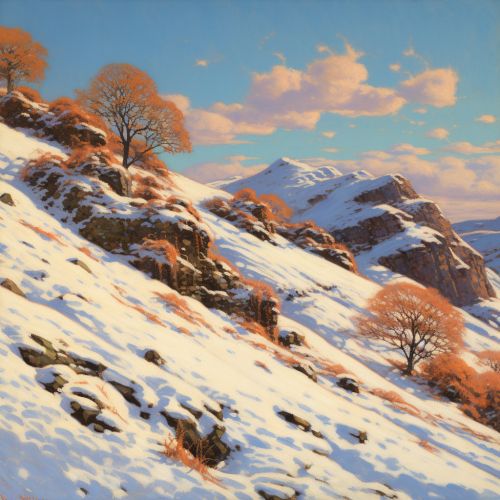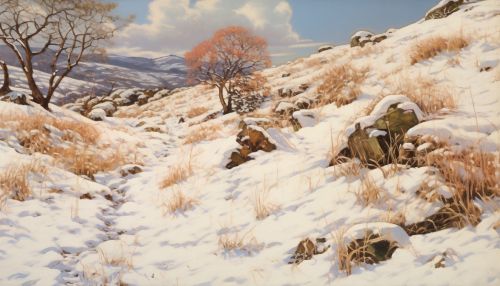Nivation
Definition and Overview
Nivation is a geomorphological process that involves the weathering of a land surface due to the freezing and thawing actions of a snow patch. This process is most common in periglacial environments, where the temperature is often below freezing for extended periods. Nivation is a complex process that involves several sub-processes, including frost weathering, solifluction, and gelifluction.


Mechanism of Nivation
The process of nivation begins with the accumulation of a snow patch in a hollow or depression on a slope. The snow patch acts as an insulator, keeping the ground beneath it at a constant temperature that is close to the freezing point. This allows the ground to remain unfrozen, even in the coldest winter months.
The snow patch also protects the ground from direct sunlight, preventing it from drying out. This leads to the ground beneath the snow patch remaining saturated with water. The constant freezing and thawing of this water leads to the weathering of the underlying rock, a process known as frost weathering.
During the warmer months, the snow patch begins to melt. The meltwater, carrying with it weathered material, flows down the slope, a process known as solifluction. In colder climates, the ground beneath the snow patch may freeze during the winter, leading to the formation of permafrost. When this permafrost thaws during the summer, it can lead to a similar downhill flow of water and weathered material, a process known as gelifluction.
Over time, these processes can lead to the formation of a nivation hollow, a bowl-shaped depression on a hillside. The size and shape of these hollows can vary greatly, depending on factors such as the local climate, the type of rock, and the slope of the hillside.
Factors Influencing Nivation
Several factors can influence the process of nivation, including the local climate, the type of rock, and the slope of the hillside.
Climate
The local climate is a major factor in nivation. The process requires a climate that is cold enough for snow to accumulate and persist for extended periods, but not so cold that the ground beneath the snow patch freezes solid. This is why nivation is most common in periglacial environments.
Rock Type
The type of rock can also influence the process of nivation. Rocks that are more susceptible to frost weathering, such as those with a high moisture content or a high porosity, are more likely to be affected by nivation.
Slope
The slope of the hillside can also influence the process of nivation. Steeper slopes are more likely to accumulate snow in hollows and depressions, leading to the initiation of the nivation process. However, if the slope is too steep, the snow may not be able to accumulate, and any weathered material may be quickly removed by gravity and water flow.
Nivation and Landscape Evolution
Nivation plays a significant role in the evolution of landscapes in periglacial environments. Over time, the process can lead to the formation of distinctive landforms, such as nivation hollows and cirques. These landforms can have a significant impact on the local ecosystem, influencing factors such as water flow and soil development.
